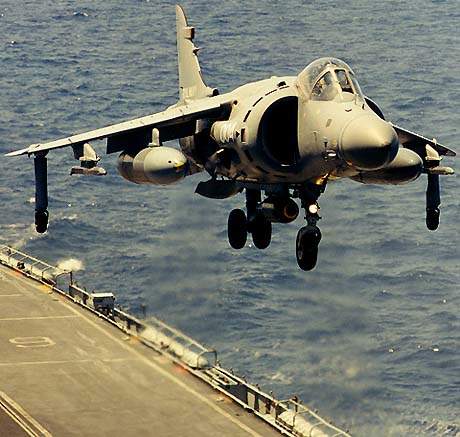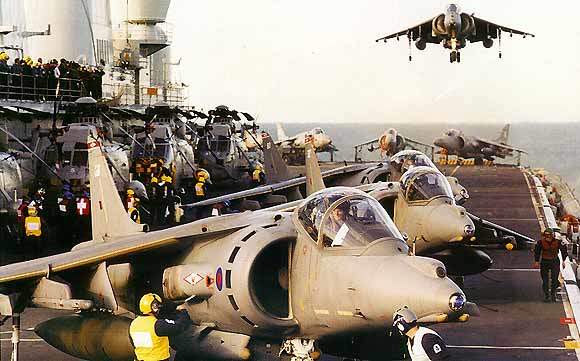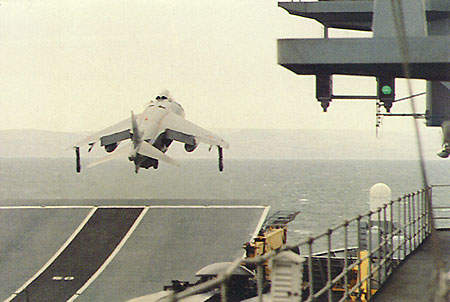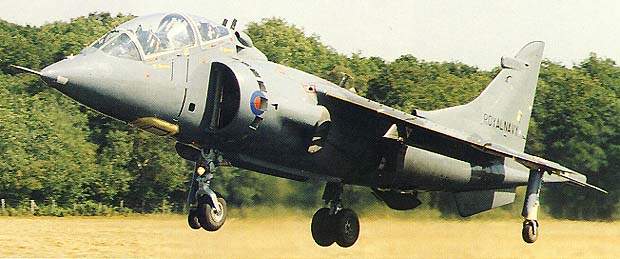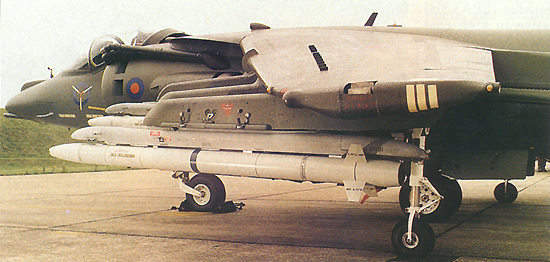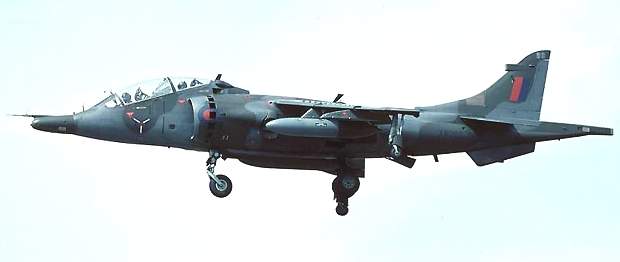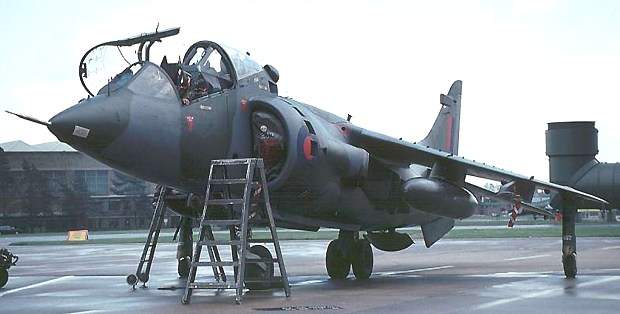The BAE Systems FA2 Sea Harrier fighter aircraft, which was in service with the British Royal Navy, provided air defence for the carrier fleet, particularly against low-flying attack aircraft armed with long-range air-to-surface missiles. The FA2 first flew in 1988 and entered service in 1993. 56 aircraft were built for the Royal Navy. The Sea Harrier was retired from the UK Royal Navy in March 2006, but is currently in service with the Indian Navy.
The design of the aircraft is optimised for air-to-air combat with secondary missions of surveillance, air-to-sea and air-to-ground attack.
The aircraft is able to detect and destroy threats before the launch of an attack using long-range weapon systems with look-down and shoot-down tactical capability.
In February 2002, the UK Ministry of Defence announced that RN FA2 Sea Harriers would be retired from service by April 2006, and that the combined RAF/RN joint force Harrier (JFH) will be operated with RAF Harrier GR7/9 aircraft by 2007.
The first of the Royal Navy’s three Sea Harrier squadrons was decommissioned in March 2004. The final Sea Harrier squadron, 801 NAS, was decommissioned on 29 March 2006. The Harriers will be replaced by the Lockheed Martin F-35 Joint Strike Fighter from 2012.
The ground attack / reconnaissance GR7s were upgraded to GR9 standard with new systems including: mission computer, stores management system for the deployment of the Brimstone anti-armour missile and precision-guided bombs, inertial navigation system / global positioning system, ground proximity warning system, upgraded displays and secure communications. The GR9 took its maiden flight in May 2003 and entered service in September 2006.
In March 2005, Indian Navy awarded an aircraft upgrade contract to Hindustan Aeronautics Limited. The contract includes the fitting of Elta EL/M-2032 multimode fire control radars and Rafael Derby visual range air-to-air missiles. The aircraft are also fitted with new combat manoeuvring flight recorders and digital cockpit voice recorders. The upgrades were completed in 2009.
FA2 cockpit
The cockpit is fitted with head-down displays (HDD) and a head-up display (HUD) from Smiths Industries. Smiths Industries also supplies the air data computer, engine control computer, engine indicators, fuel management and gauging, air data indicators, radar indicator, stores management system, and the weapon aiming and display computer.
The cockpit is equipped with a Thales Optronics (Vinten) display recording system for the HDDs and HUD and a Martin Baker Mark 10H rocket-ejection seat.
Sea Harrier weapons
A Smiths Industries weapon stores management system ensures the correct selection and release of weapons. The aircraft has five weapon stations and weapons are mounted on Frazer-Nash rail launchers, Raytheon LAU-106A ejection-launchers and Varo LAU-7 rail launchers.
The FA2 is equipped with the Raytheon AIM-120A AMRAAM medium-range air-to-air missile, which is an all-weather, fire-and-forget missile, equipped with an active radar seeker with a range of over 50 miles. The AIM-9 M/L Sidewinder air-to-air missile provides the Harrier with capability for firing close range at an approaching enemy aircraft in a dogfight. The Lockheed Martin / Raytheon Sidewinder M/L has an all-aspect active optical seeker. The Sea Harrier’s anti-ship missile is the MBDA (formerly Matra Bae Dynamics) Sea Eagle, a fire-and-forget sea-skimming missile with active radar homing and a range of over 50 miles.
The Sea Harrier can carry the MBDA ALARM anti-radiation missile, which can be deployed in direct attack mode, against a radar target, or in loiter mode, where the missile is launched in the vicinity of the threat and waits for the hostile radar to emit.
Countermeasures
Sea Harrier is equipped with the BAE Systems Sky Guardian 200 radar warning receiver and the AN/ALE-40 chaff and flare dispenser from BAE Systems and Raytheon. AN/ALE-40 is capable of launching chaff, flares and active expendable GEN-X radar decoys.
Sensors
The FA2 Harrier is fitted with a BAE SYSTEMS Blue Vixen pulse Doppler all-weather radar. Blue Vixen is a multimode radar that performs ground mapping and surface target detection and tracking, in addition to long-range look-up and look-down detection and tracking of aircraft. The radar also interfaces to the AMRAAM missile system.
An F.95 surveillance camera is installed in the nose of the aircraft, with a cockpit voice recorder for surveillance mission evaluation.
FA2 navigation and communications
The Sea Harrier has an AD 2770 tactical air navigation system from BAE Systems and MADGE Microwave Airborne Digital Guidance Equipment from Thales Defence. The Royal Navy Sea Harrier FA2 update programme includes the fitting of a reversionary IPG-100F global positioning system from Rockwell-Collins (UK) Limited.
The communications suite consists of an AD120 VHF radio from BAE Systems and an AN/ARC-164 ARC radio from Raytheon. The identification friend or foe system is the Allied Signal AN/APX-100 mk12 or the PTR 446 IFF.
Turbofan engine
The single turbofan engine is the Rolls-Royce Pegasus mk104 or mk106, which has four rotatable cascade-type exhaust nozzles. For take-off, the nozzles are initially in the fully aft position and then are rotated partially downwards for lift-off and acceleration. Viffing (vectoring in forward flight), a form of advanced combat manoeuvre developed by V/STOL pilots, is achieved by vectoring the nozzles at high speed for sudden deceleration and very tight turns.
The Royal Navy FA2s may be fitted with the upgraded Pegasus 11-61 engines, already fitted to the Harrier II Plus and being retrofitted to some RAF GR.7 Harriers. The new engines provide more thrust, particularly in hot climates.

